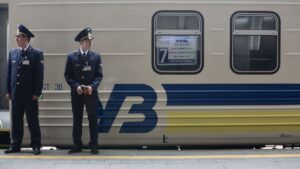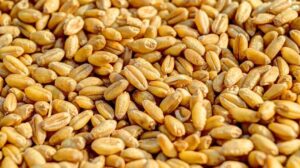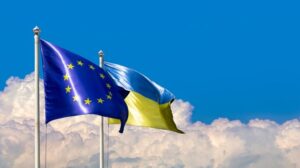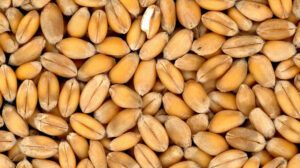
A study of the prospects for EU rail links with Ukraine and Moldova provides a basis for launching a project to use European gauge railway gauges on key lines, the European Commission (EC) has said.
The study was published on Tuesday by the European Commission and the European Investment Bank (EIB).
“The construction of the first European rail gauge in Ukraine and Moldova, which will connect their railroads with Poland and Romania, will bring these countries closer to the EU single market. With this study, we are laying the groundwork for long-term solutions, supporting Ukraine in its trade and recovery,” said Adina Velian, EC Member for Transport.
The conformity of the railroad lines of Ukraine and Moldova to the European standard of gauge, she said, will also improve conditions for citizens of these countries to travel to Europe.
The study suggests that the European gauge on the lines to Lviv and Chisinau should be implemented “as a first step to improve communication between Poland and Ukraine, as well as between Romania and Moldova”.
The study also assesses how the new European standard gauge lines will interact with the rest of the rail network in these countries, where broad gauge will continue to be used, the EC communiqué said.

JSC “Ukrzaliznytsia” (UZ) in January-May this year carried in communication with the European Union 2.3 times more passengers (786 thousand) compared to the same period of 2022, reported the press service of UZ in Telegram-channel.
In addition, for five months carried 6.4% more passengers than for the same periods of 2016-2019, when in communication with the EU and back by rail was carried a total of 735 thousand people, calculated in the press service.
“In 5 months of 2023, Ukrzaliznytsia carried more passengers in communication with the EU than in the same period cumulatively during the previous four (dokovidnye) years,” said in the message of UZ on Wednesday.
It is specified that in the five months of 2016 was carried 19.8 thousand passengers, 2017 – 98.2 thousand, 2018 – 230.4 thousand, 2019 – 387.2 thousand, 2020 – 171.7 thousand people. Data for January-May 2021 are not given, but in 2022 during this period UZ carried 341.6 thousand passengers in the EU.
The Company notes that there is a clear trend of Ukrainians returning home: the number of people who have left the country since the beginning of 2023 is 369 thousand, and in the opposite direction – to Ukraine – 417 thousand people.
In the UZ also clarified that if in 2016 in communication with the EU were only 8 trains, now their number has increased to 27, of which 15 formed “Ukrzaliznytsia”, and the rest – foreign carriers.
The company recalled that given the increase in demand since last year due to the full-scale invasion of Russia, UZ is expanding connections with other countries, in particular launched seven new trains: № 19/20, № 23/24 “Kiev-Khelm”, № 32/31 “Zaporozhye-Permyshl”, № 53/54, № 89/90 “Kiev-Permyshl”, № 73/74 “Kharkiv-Permyshl” and № 93/94 “Kharkiv-Khelm”.

Corteva Agriscience, an international agricultural research company, increased its exports of Pioneer brand corn seed to the EU 16-fold in 2023 through established channels in Romania and Hungary, according to its press release.
According to it, the company was able to achieve a 15 percent increase in yields of Pioneer’s advanced seed hybrids last year through the introduction of precision farming, irrigation and other advanced approaches.
“For ten years we have been developing seed production in Ukraine, because for Corteva Agriscience our country is one of the major players in the global agricultural market, which has a significant impact on global food security,” – quoted the press service of the regional head of seed production Corteva Agriscience Andrey Andriushko.
He said that amid the war the company continues to invest in the production seed complex and support the communities of the region. For example, last year Corteva Agriscience signed a declaration with the Ministry of Agrarian Policy and Food of Ukraine on deepening and further developing cooperation for food security in Ukraine and the world, which resulted in increasing the production capacity of the seed complex in Stasi village, Poltava region, officially opened in June 2013 and investments of over $56 million. Its annual capacity has reached about 500 thousand seed units of corn and 250 thousand seed units.
According to the company, Corteva is one of the largest taxpayers in the region. The total number of employees, including seasonal workers, reaches nearly 400.
According to the press release, Corteva has invested about UAH 4.6 million in the development of Stasi village since 2013 (to improve infrastructure, medicine, education and social life of the community, in particular, it financed the reconstruction of a bomb shelter for 800 people.
Corteva Agriscience is a global agricultural company. It offers agricultural producers comprehensive solutions to maximize crop yields and profitability. It has more than 150 research facilities and more than 65 active substances in its portfolio.
Its representative office in Ukraine includes a central office in Kiev, a research center in Lyubartsy village (Kiev region) and a seed production complex opened in 2013 in Stasi village (Poltava region). Investments in the plant over five years amounted to more than $56 mln.
In April 2022, the company decided to leave the Russian market due to the full-scale war unleashed by Russia against Ukraine.

Ukrainian Agribusiness Club (UCAB) considers the continuation of the restrictive measures on import of wheat, corn, rapeseed and sunflower from Ukraine to Poland, Hungary, Slovakia, Romania and Bulgaria discriminatory and groundless and insists on the cancellation of this decision.
“Such prolongation will neither solve the problems of local markets nor improve the situation of local farmers,” said a statement published on the UCAB website on Monday.
The business association believes that the resolution prepared by the EU on the prohibition of the import of agricultural products from Ukraine to five neighboring EU countries, according to which the restrictions will be in force until September 15 this year, will have a negative impact on the economic recovery of Ukrainian farmers during the war.
Such decisions should be taken only after detailed studies and consultations with all EU member states because according to the latest data, some neighboring EU member states, such as Poland, were able to increase their export potential and domestic processing by importing cheaper Ukrainian agricultural products and improve their positions in livestock and finished products, the UCAB reminded.
The business association noted the negative influence of such a decision on the situation with sabotage of the “grain agreement” by Russia. “According to preliminary forecasts, the current steps to prohibit the import of Ukrainian agricultural products to the EU may deepen the blackmailing of the Russians regarding the operation of the grain corridor,” the UCAB said.
Experts of business-association emphasized that Ukraine will have less export potential in 2023 season: export of grains and oilseeds from Ukraine is forecasted to decrease by one third to 46 million tons per year.
Existing trade restrictions on Ukrainian agricultural products in five countries of the EU should be abolished. At the same time, it is worth conducting an open constructive dialogue between representatives of the Ukrainian and European agro-communities in order to find compromises, which will help both the EU and Ukraine to become stronger, summed up in UCAB.

The European Union has extended by another year the cancellation of import duties on Ukrainian exports. This decision will become effective from 6 June 2023 and will be effective until 5 June 2024, inclusive.
The regulation of the European Parliament and the European Council of May 31 on extending for another year the abolition of import duties on Ukrainian exports was published in the EU official Journal on Monday.
The moratorium on duties imposed in 2022 will expire on June 5, 2023.
In order to prevent fraud in the preferential mechanisms established by the regulation, Ukraine must comply with a number of rules, including refraining from introducing new duties or charges and new quantitative restrictions or measures with equivalent effect, from increasing existing duties and charges, and from imposing any other restrictions in trade with the EU, unless clearly justified, the document says.
According to the regulation, if Ukraine fails to comply with any of these conditions, the EU may suspend the preferential mechanisms.

The European Union (EU) and Ukraine need to find a solution that would allow Ukrainian farmers to work, exporting grain to the EU in the volumes they need, Croatian Minister of Agriculture Marija Vučković said at an online meeting with Ukrainian Minister of Agrarian Policy Mykola Solsky on Tuesday.
Vučković is confident that the restrictions on the export of Ukrainian agricultural products to Europe, which were introduced by the European Commission until June 5, should not be extended after this date, the press service of Ukraine’s Ministry of Agrarian Policy and Food said.
Solsky, in turn, thanked his colleague for understanding. He also said that Croatia became one of the signatories of the letter of the European Commission sent by the relevant ministers of 14 states of the European Union. In this appeal, they expressed concern about the temporary ban on importing Ukrainian agricultural products to five states of the European Union.